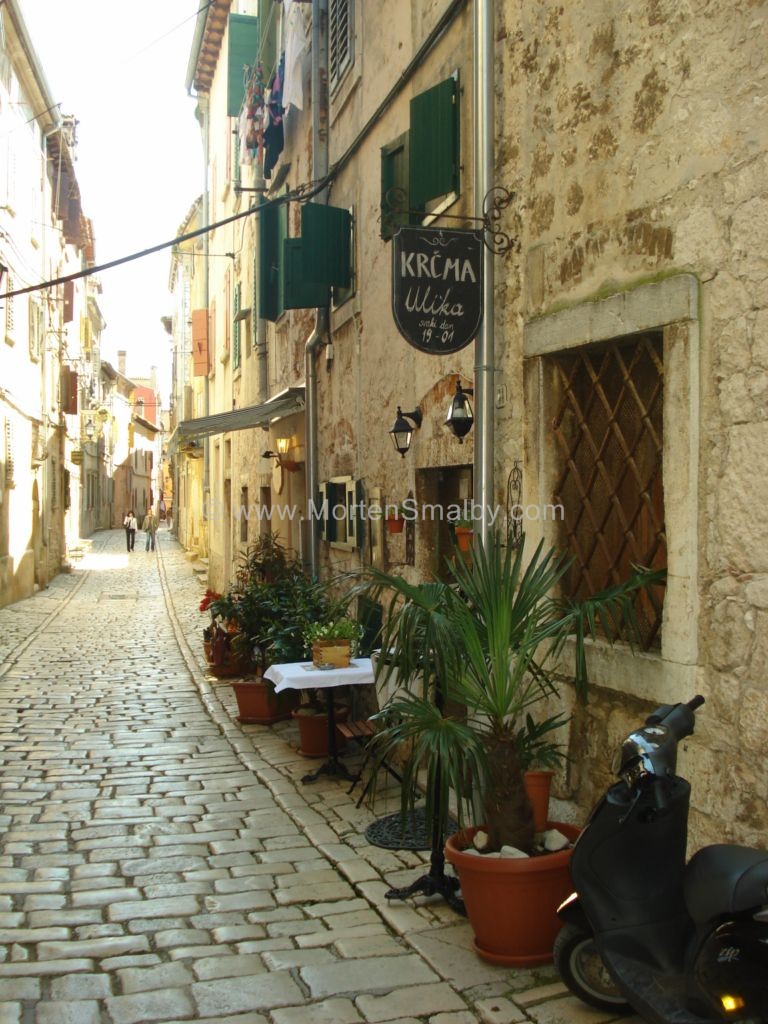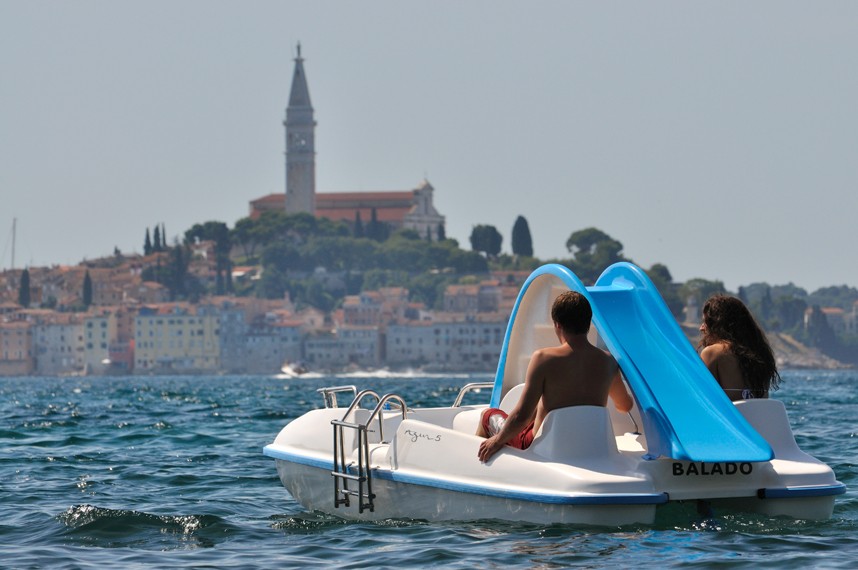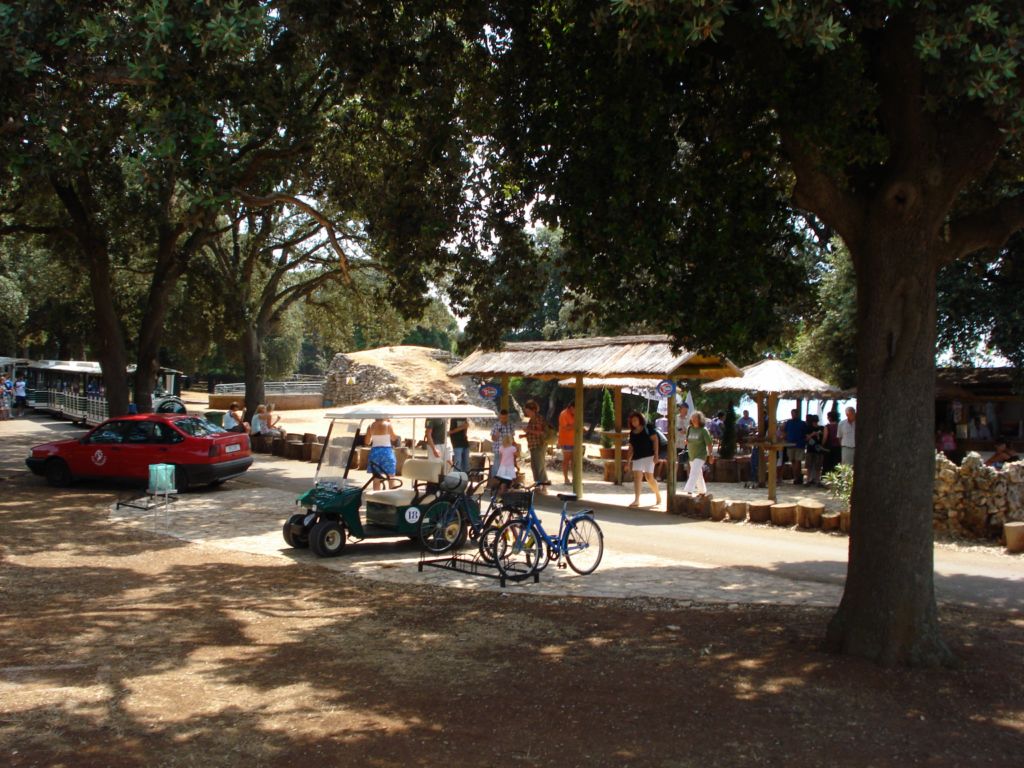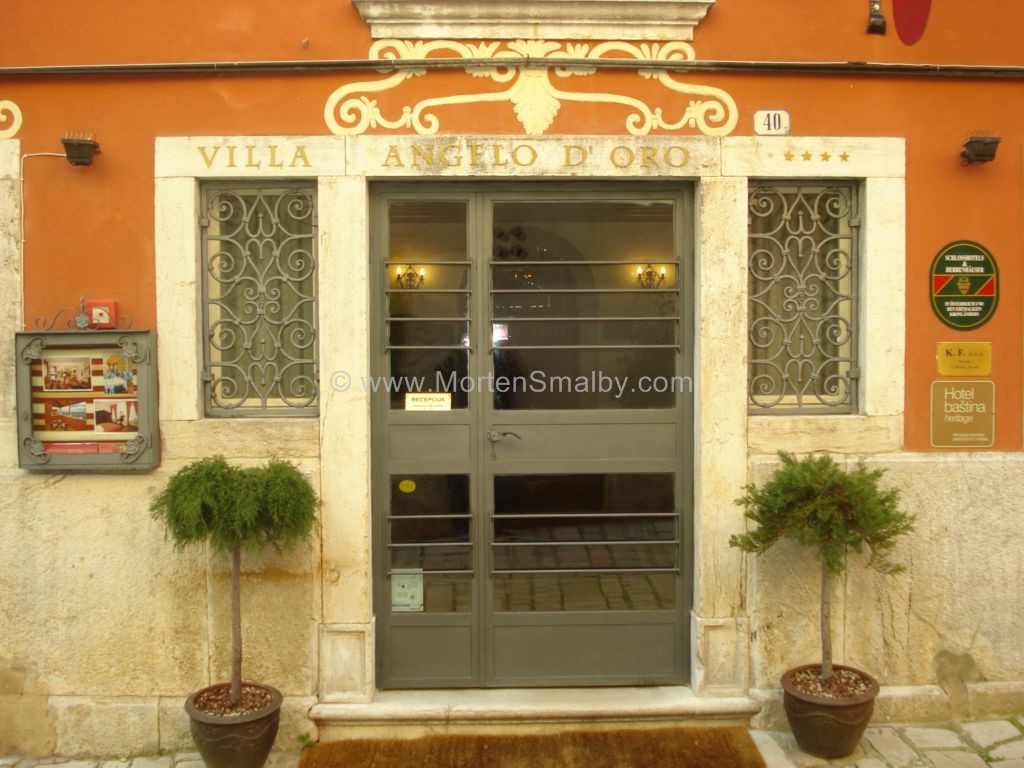The history of Rovinj
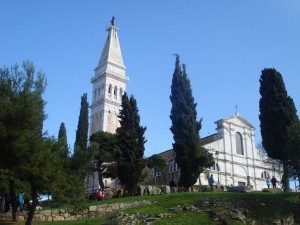 The history of Rovinj can with certainty be dated back to the 5th century, where a settlement called “Castrum Rubini” was mentioned to be situated at the Rovinj Island (the place where the old town of Rovinj is situated today). Although it can not be historically document, experts consider it to be most likely that settlement existed here, already in the 1 or 2 century when the Romans ruled in the area.
The history of Rovinj can with certainty be dated back to the 5th century, where a settlement called “Castrum Rubini” was mentioned to be situated at the Rovinj Island (the place where the old town of Rovinj is situated today). Although it can not be historically document, experts consider it to be most likely that settlement existed here, already in the 1 or 2 century when the Romans ruled in the area.
As the rest of Istria, the history of Rovinj is an almost never ending story of a city with changing ruler ships, but in between the city had also longer periods whit out changes in the ruler ships like when the Byzantine ruled from the beginning of the 6th to the end of the 8th century. Of course the longest “quite” period was under Venetian ruler ship, from the end of the 13th century to the fall of the Venetian republic by the end of the 18th century.
By the end of the Venetian ruler ship the channel between the mainland and the Rovinj Island was filled so that the island became the old town peninsula as it is today.
The real progress of the town took place as the Austrian empire gain power over the city in the beginning of the 19thcentury, in this period the industrialisation and urbanisation of the city made the population grow to 8000 people. In this period, cement, tobacco and shipbuilding industries became the foundation of the city.
After WWI the city came under ruler ship of the fascist Italy and later by the end of WWII the Germany occupied the city. After the war the city became part of Yogoslavia and finally became part of today Croatia in January 1992. Today the city is a modern tourist town with app. 14000 inhibitors.
Legends from Rovinj:
Cissa, the Atlantis of Istria
A mystery lies hidden deep in the turquoise waters off Rovinj.
In front of Rovinj there is a series of small islands: St. Andrew (Red Island), St. Catherine, Pirus, Two Sisters, a small island Seven Hairs, Saint John…and somewhere among these islands once belonged an island-city named Cissa. The great Roman geographer Pliny the Elder mentioned Cissa in the first century CE. It is known that Cissa was famed in the heyday of the Roman Empire for producing fine purple dyes that could be used on the emperors’ regal garments.
Today, Cissa is a lost city: no one knows where exactly it was located. The people of Rovinj think they know, however. According to the legend, on 16 September, sometime between the fourth and eighth centuries, a catastrophic earthquake shook Istria.
This date is the feast day of St. Eufemija, the patron saint of Rovinj. When that earthquake struck, it leveled Cissa, plunging the once-prosperous city into the sea. The island on which the city sat fragmented into several islands that still exist today, such as St. Andrija. Those of the population who were able to escape founded nearby the city that then became Rovinj.
Regarding the existence of Cissa many legends overlap, although its existence has never been proven. Cissa is still alive in the stories of local fishermen, whose nets very often catch a fragment of an amphora or a brick on the place where the town supposedly sank.
Legend of Saint Euphemia
St. Euphemia probably was just a teenager living in 4th-century Chalcedon near Constantinople when she fell victim to Diocletian’s campaign to purge the Roman Empire of Christianity. St. Euphemia was the daughter of a prominent Chalcedon citizen and was imprisoned with 49 other Christians when they refused to worship the town idol and deny their faith. Because of her refusal to deny Christ, the young Euphemia was tortured with fire and snakes and by having her bones broken on a wheel before being thrown to the lions, which miraculously didn’t devour her body after they killed her. Christians recovered Euphemia’s body and buried it in Chalcedon, but in the 7th century they moved it to Constantinople because they feared the body would be defiled by Persian invaders. In Constantinople, the Christian Emperor Constantine ordered that a church be built in Euphemia’s honor. Her sarcophagus remained there until A.D. 800, when the faithful again moved it because they feared that the Emperor Nicefor might remove it to parts unknown.
No one knows for sure how the coffin and its contents got to Rovinj, but one legend says that Christian fishermen probably put it on their boats in an attempt to get it to a safe place, and then somehow lost it in the sea. The legend goes on to attribute Euphemia’s arrival on the shores of Rovinj to a miracle. One local legend further states that villagers who found the coffin couldn’t budge the heavy stone container from the surf no matter how hard they tried. In the end it was a young boy with a pair of calves who was able to get the coffin out of the water after St. Euphemia appeared to him in a dream and told him what to do. The coffin is now a symbol of Rovinj and rests behind the altar in the right aisle of the church at the top of Rovinj’s highest hill. Through the years, large numbers of worshipers come to pray at the site daily, especially on September 16, the day that St. Euphemia died in A.D. 304.
Tags: Istria, Rovinj Sights, Stuff to do



